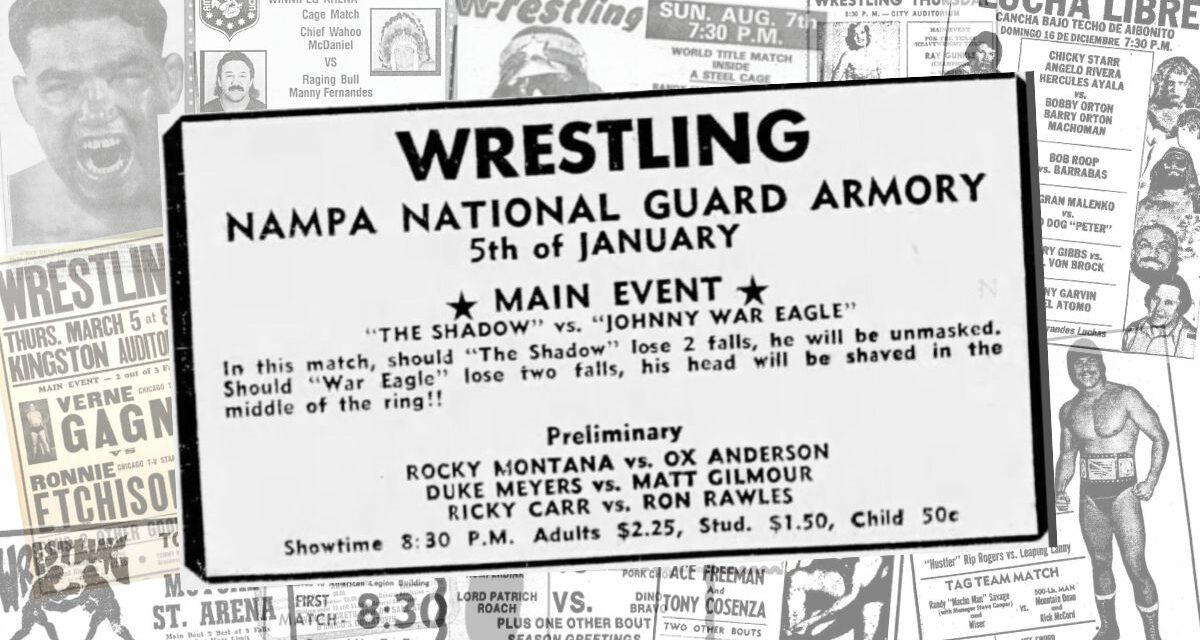A new year is upon us. A new year to grow, learn, enjoy new experiences, and forge new ground. With those sentiments in mind, I thought diving into an oddball card would be fun. Here it is:
- Hair vs. Mask: “The Shadow” vs. “Johnny War Eagle”
- Rocky Montana vs. Ox Anderson
- Duke Meyers vs. Matt Gilmour
- Ricky Carr vs. Ron Rawles
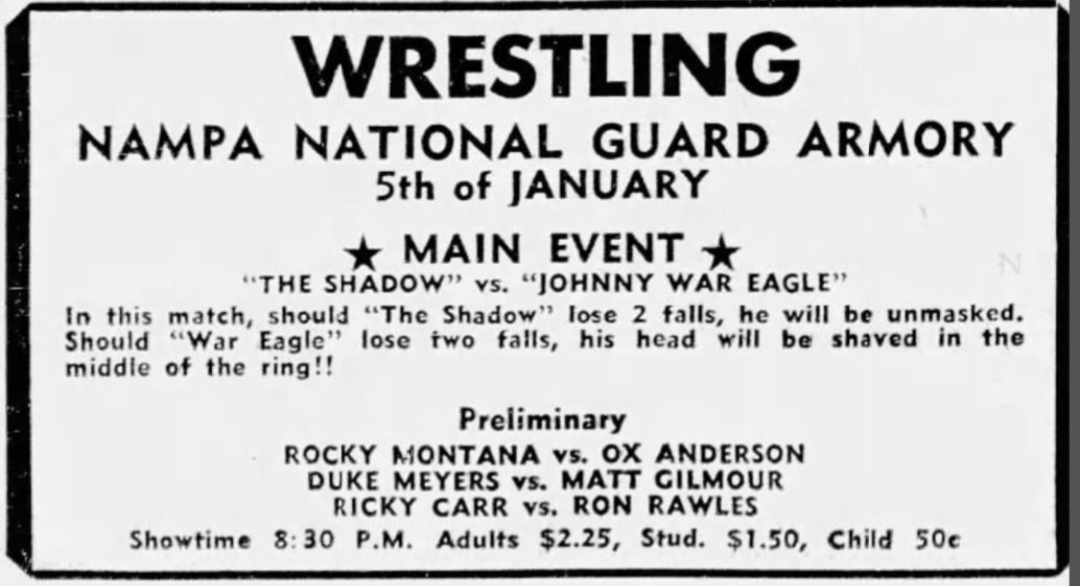
What drew me to this card was the sheer anonymity of it. Beyond a few names I’d heard in passing, it’s a mountain full of confusion from a period in Rocky Mountain wrestling shrouded in the mists of time.
This is possibly a Rocky Mountain All-Star Wrestling event from January 5, 1970, outside Boise, Idaho. This small promotion attempted to service the wrestling-starved population base of the mountainous region running along the I-15 corridor of Utah, Idaho, and western Colorado, previously promoted by Tex Hager’s Tri-State Sports. By 1970, however, the area saw little action outside of spot shows by Don Owen in Portland or the Funks in Amarillo.
The backdrop for the evening was the Nampa Army National Guard Armory in Nampa, Idaho – just 20 minutes from downtown Boise. The venue, still in use as the Idaho National Guard Armory – Nampa, has a rich history of hosting wrestling events. But those events tended to be collegiate wrestling meets, making this professional card so fascinating.
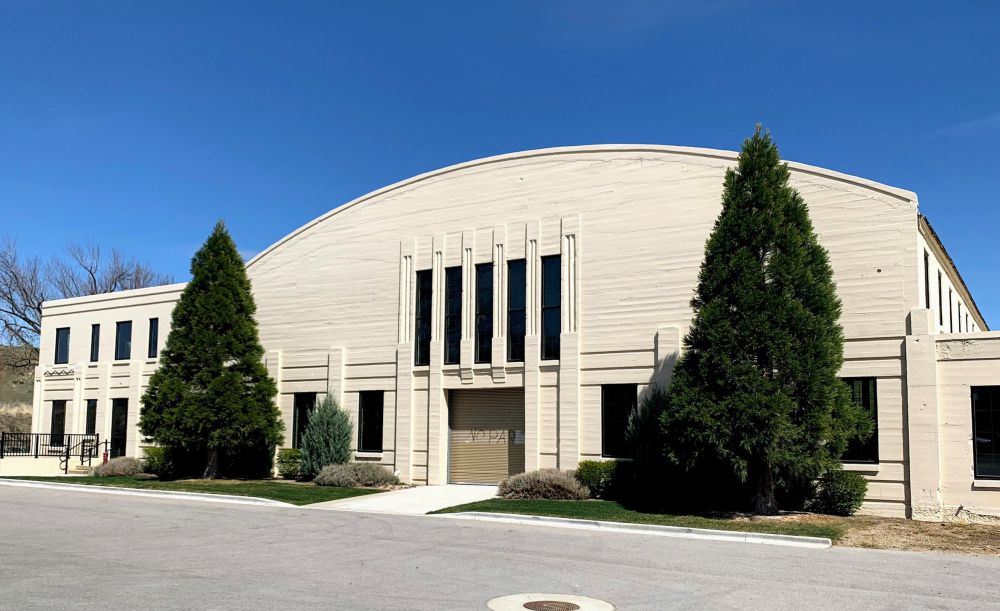
The Nampa National Guard Armory.
I’ll jump back to the opening contest for the event, a grudge match between Ricky Carr and Rob Rawles, later instead jumping right into our second match.
The second event of the evening paired Duke Meyers (sic) and Matt Gilmour. Meyers, real name Floyd Myers, was a rough-around-the-edges rookie, who would find early fame in Amarillo, and later in Memphis (opposite Jerry “The King” Lawler) and finally as a tag team in Stampede, with notable partners Dynamite Kid and Kerry Brown.
Myers was a rookie in 1970, having broken in the previous year. He trained under Soldat Gorky, aka “Wolfman” Smith, working as a bouncer at one of Gorky’s bars as he learned the ropes, as detailed in a 2015 obituary for Slam Wrestling by Marty Goldstein.
“He was my first match in professional wrestling. I got in here in Portland, and we were training. Soldat Gorky cinched up on me in a small package rollup, and he broke a vertebra in my back,” Myers recalled.
After healing and before this event, Myers headed to the Phoenix territory. “That was a joke. We had more wrestlers in the dressing rooms than they had fans in the stands,” he said. “That was embarrassing.”
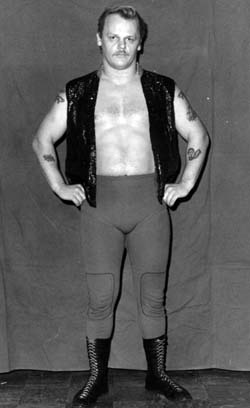
A young Duke Myers.
“Duke was a classic example of what made Stampede Wrestling so great,” said Bret Hart in the same obituary. “One of the most solid and steady wrestlers ever to work up here.”
Myers’ opponent, Matt Gilmour, was something of a journeyman, as detailed in this Slam obituary from 2011. Born Duncan McTavish in Old Cumnock, Ayrshire, Scotland, Gilmour grew up in Hamilton, Ontario, the birthplace of a staggering number of ring greats. He found modest fame in Arizona, Quebec, the Gulf Coast, and Northern Ontario, amongst other territories.
Perhaps the best anecdote from the life of this famed storyteller is his confusion regarding marijuana smoking habits in San Francisco – as told in this great aside from Greg Oliver, where the promoter, Roy Shire, had asked Gilmour how long he would stay in town.
“Not too long.”
“Why not?”
“Nobody’s making very good money.”
“What do you mean?’
“Well, they’re all smoking the same cigarette.”
The semi-final for the evening features the perfectly named Rocky Montana versus Ox Anderson.
Rocky Montana was Michael Francesse and found success in the NWF, facing off against perennial hero Johnny Powers and even teaming with The Crusher on occasion. Interestingly, Rocky Montana also has deep ties to the Attitude Era, having trained Brian “Chains the Fake Undertaker” Lee and the Harris Brothers, Ron and Don.
Montana’s opponent for the evening was Don “Ox” Anderson, a “local” grappler from Salt Lake City, Utah. Anderson was a journeyman grappler, spending much of his career plying his trade in the Pacific Northwest, his home state, Utah, and across Canada. He found his greatest notoriety in the tag team ranks, winning gold with Killer Kowalski, Leo Newman, and Mitsu Arakawa.
Here’s a card from Saskatoon, July 1958, pitting Anderson against George Gordienko, legendary Canadian wrestler.
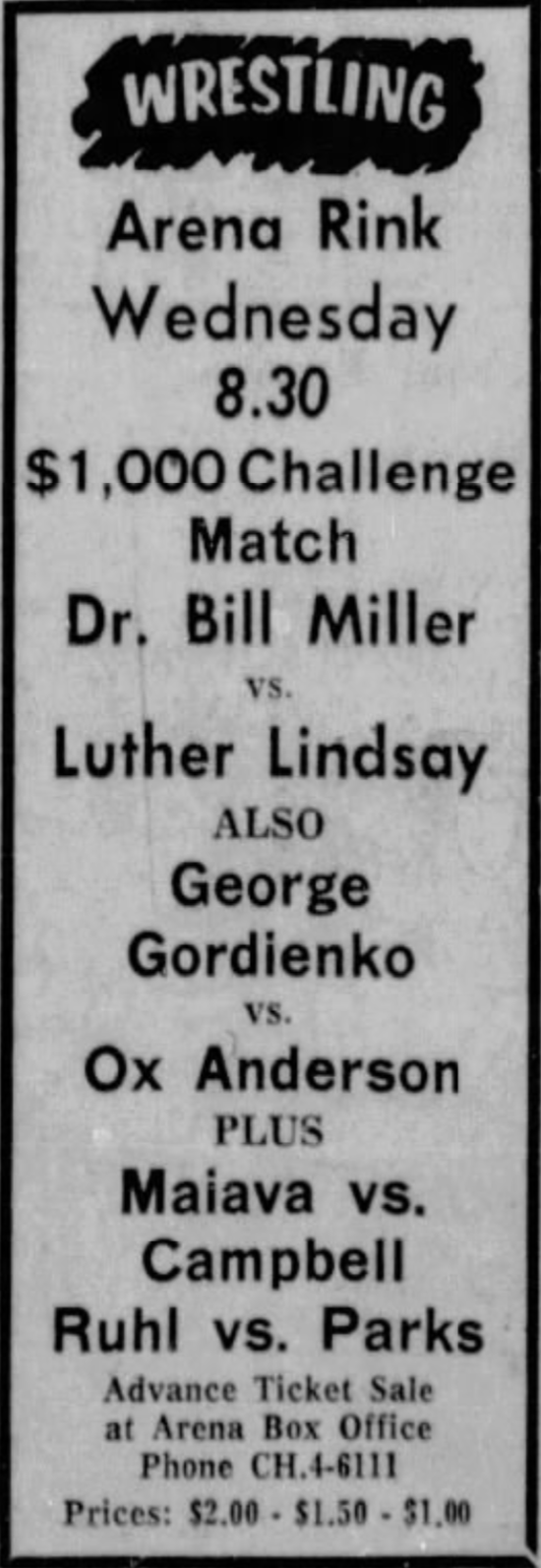
And here is a cheap plug for my recent Slam review of George Gordienko: Canadian Wrestler, Artist, and Renaissance Man by Steven Verrier. Hey, any press is good press.
Topping the card is likely another Canadian, Johnny War Eagle. I say likely, as nothing sends shudders down the spine of a wrestling historian then the placing of a competitors name between quotation marks – especially when a name like “Johnny War Eagle” is so easy to reproduce. However, I believe we may have the real deal here, especially as he was a tag champ in western Canada the year prior, making it probable he was still in the area in 1970.
Also spelled “Jean War Eagle,” he was really Fernand Messier from Montreal. While War Eagle found some success as a singles wrestler, he is best remembered as half of one of Quebec’s hottest tag teams of the 1970s, along with Billy Two Rivers, and as NWA Pacific Northwest Tag Team titles with Billy White Wolf (Adnan Al-Kassie).
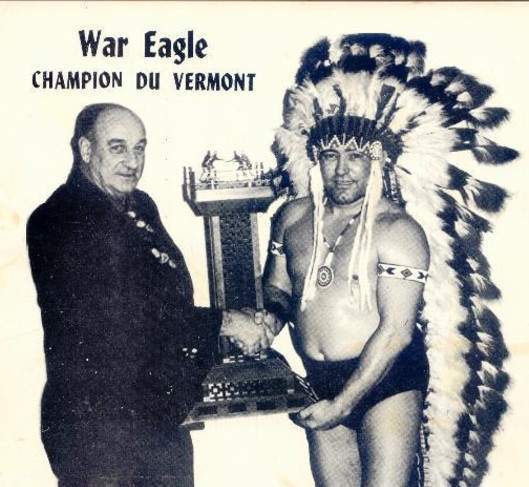
Promoter Bob “Legs” Langevin with Johnny War Eagle.
War Eagle’s opponent is something of a mystery, which is obvious, given his name. Over a dozen wrestlers have used the title “The Shadow,” with many careers overlapping. To add even more confusion, advertisements or newspaper reports often shorten some masked grapplers’ names, with endless “Demons” and “Shadows” missing the nod to their blue, red, or other terrifying color choices.
Despite hours of research, however, the identity of this version is unknown. What I can say, however, is that judging by the dramatic match stipulations, this “Shadow” was likely a short-lived version designed to fill an essential card spot and provide the appearance of danger and a fierce grudge.
And finally, as promised, our opening contest. I saved this bout for last because I don’t have the slightest idea about the backstory of either man. Having scoured records and wrestler profiles, nothing turned up.
And that is where you, the loyal Slam readers, come in — can you help shed some light on Ricky Carr, Ron Rawles, or the mysterious Shadow? Reach out to me on Twitter (@cory_m_santos) or join the conversation down belt!
I want to wish everyone a Happy Holidays and New Year. May 2023 be your best year yet!
RELATED LINK
